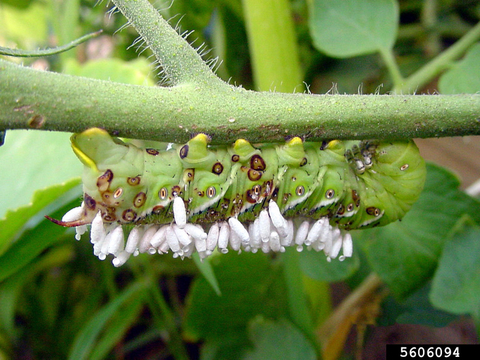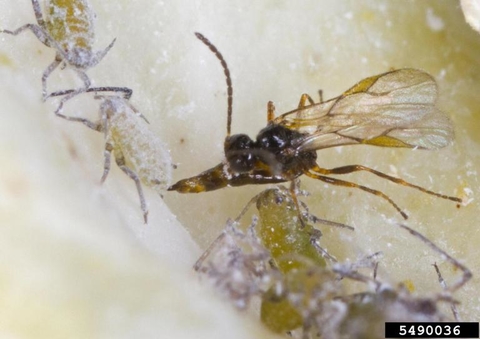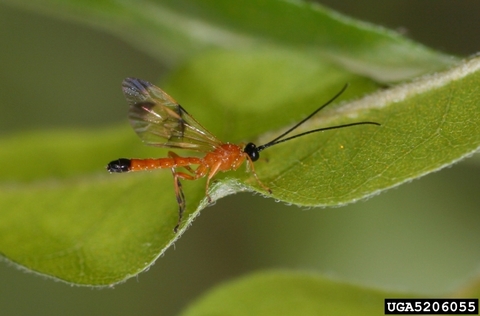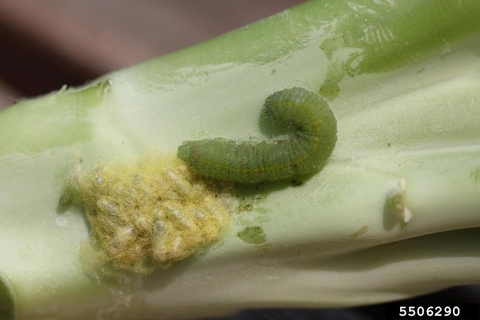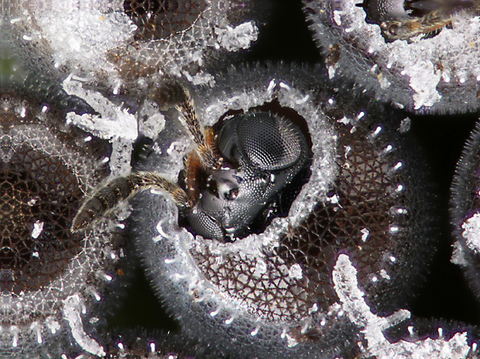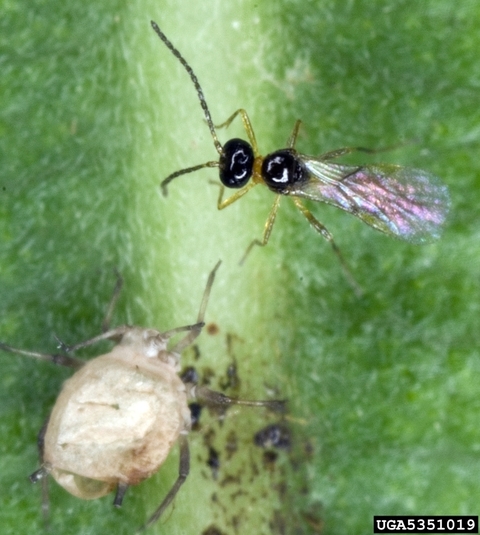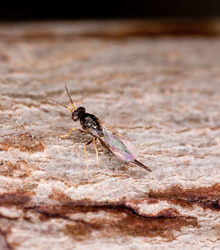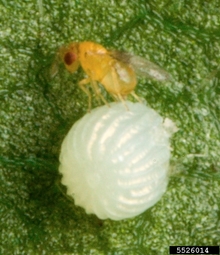Quick facts
- Parasitoid wasps are a large group of wasps that need to lay their eggs inside other insects to complete their lifecycle.
- Parasitoid wasps are useful in controlling both native pests and invasive species.
- Most wasps are small and generic looking.
- Parasitoid wasps do not sting or bite people, and they do not have hives that they protect.
How to tell a parasitoid wasp from other insects
Adults
- Parasitoid wasps are small, flying insects that can only be identified by an expert.
- Most are tiny, with many species being smaller than a millimeter
- You may see adults feeding on or near flowers, or flying near plants as they look for a place to lay their eggs
Pupae
- You are more likely to see the other life stages on or near insects that have been parasitized.
- They can look like caterpillars with grains of rice on them.
Biology
While parasitoid wasps may use different insects to finish their lifecycle, the basics of that cycle are similar. Like a butterfly, their lifecycles have four parts.
- Adults primarily feed on the pollen and nectar of flowers.
- They are solitary, meaning they don’t build a hive or report to a queen.
- Each species of parasitoid wasp has another species of insects it needs to complete its lifecycle. Adults seek out this other insect, and when they find it, they lay their eggs inside of it.
- These other insects can be aphids, woodboring beetles or caterpillars, among others. They can seek out any age of insect, from egg to caterpillar to adult.
- Eggs hatch inside the parasitized insect and larvae feed.
- Larvae finish feeding and become pupae. These pupae are sometimes visible outside of the insect.
- Adults emerge and fly away. The parasitized insect dies.
Promoting parasitoid wasps in gardens and farms
Parasitoid wasps are probably our most beneficial group of predatory insects, though they often go unnoticed. To provide habitat for them:
- Have consistently flowering plants in your outdoor spaces.
- Allow at least a low level of pest presence on plants.
- Limit pesticide applications. Many insecticides are not selective, meaning they will kill pests, beneficial insects and other insects.
Why do we release parasitoids?
Sometimes we hear about these wasps in the news when they are released to control pests. Because parasitoids are often focused on seeking out just one other species of insect, it makes them a valuable tool to fight invasive insect species.
Most recently in Minnesota, parasitoid wasps have been released to reduce emerald ash borer populations. This pest could change the way Minnesota’s forests and communities look, as it kills ash trees. A parasitoid wasp that parasitizes emerald ash borer has been found to reduce emerald ash borer populations in other areas, and they have been released in Minnesota to protect ash trees.
Is it worth buying parasitoid wasps for my garden or farm?
You can purchase parasitoid wasps to control a variety of pests. Many are from the trichogramma group of parasitoid wasps. These wasps are minuscule (almost too small to be seen with the naked eye) and can help control pests in some situations.
Could trichogramma wasps control your problem?
These wasps are often sold in a multi-species mix. These species focus on seeking out and parasitizing caterpillar pests. Make sure you know pests are feeding on your plants, you can use Ask a Master Gardener for identification help.
Can you correctly handle and release wasps?
Wasps often need to be placed promptly after shipping. This means the pest needs to be present in high enough numbers when the package arrives to justify the purchase of the wasps.
Is this problem ongoing?
Adults typically live 1-2 weeks, and depending on the scale of the problem, multiple releases over time may be needed.
Generally, it is better to make your space more welcoming to parasitoids, which will also attract other beneficial insects and native bees, than to repeatedly buy and release trichogramma wasps.
Duan, J. J., Van Driesche, R. G., Schmude, J., Crandall, R., Rutlege, C., Quinn, N., ... & Elkinton, J. S. (2021). Significant suppression of invasive emerald ash borer by introduced parasitoids: potential for North American ash recovery. Journal of Pest Science, 1-10.
Reviewed in 2022


